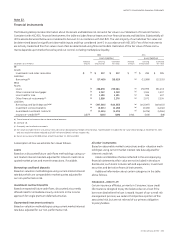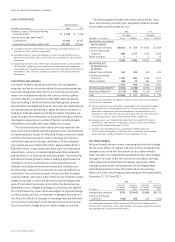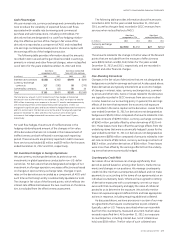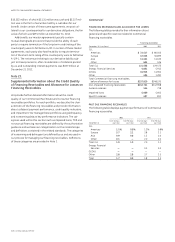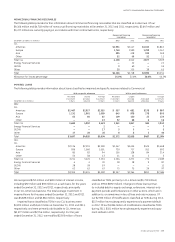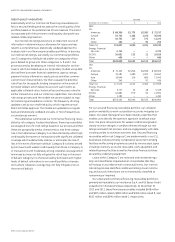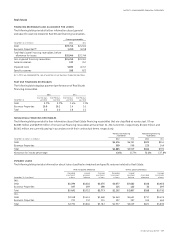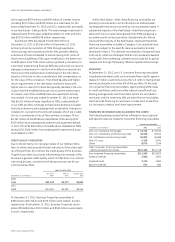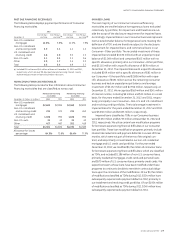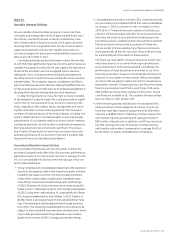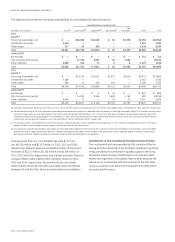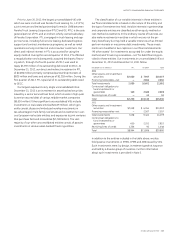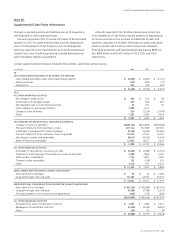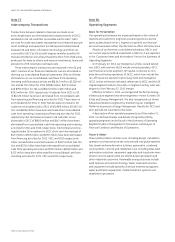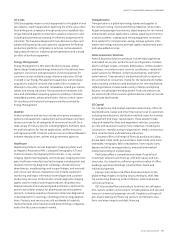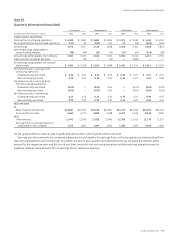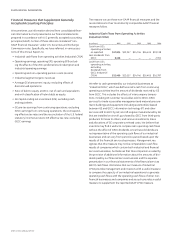GE 2012 Annual Report Download - page 133
Download and view the complete annual report
Please find page 133 of the 2012 GE annual report below. You can navigate through the pages in the report by either clicking on the pages listed below, or by using the keyword search tool below to find specific information within the annual report.
GE 2012 ANNUAL REPORT 131
notes to consolidated financial statements
Note 24.
Variable Interest Entities
We use variable interest entities primarily to securitize finan-
cial assets and arrange other forms of asset-backed financing in
the ordinary course of business. Except as noted below, inves-
tors in these entities only have recourse to the assets owned by
the entity and not to our general credit. We do not have implicit
support arrangements with any VIE. We did not provide non-
contractual support for previously transferred financing receiv-
ables to any VIE in 2012 or 2011.
In evaluating whether we have the power to direct the activities
of a VIE that most significantly impact its economic performance, we
consider the purpose for which the VIE was created, the importance
of each of the activities in which it is engaged and our decision-
making role, if any, in those activities that significantly determine
the entity’s economic performance as compared to other economic
interest holders. This evaluation requires consideration of all facts
and circumstances relevant to decision-making that affects the enti-
ty’s future performance and the exercise of professional judgment in
deciding which decision-making rights are most important.
In determining whether we have the right to receive benefits
or the obligation to absorb losses that could potentially be signifi-
cant to the VIE, we evaluate all of our economic interests in the
entity, regardless of form (debt, equity, management and servic-
ing fees, and other contractual arrangements). This evaluation
considers all relevant factors of the entity’s design, including: the
entity’s capital structure, contractual rights to earnings (losses),
subordination of our interests relative to those of other investors,
contingent payments, as well as other contractual arrangements
that have potential to be economically significant. The evalua-
tion of each of these factors in reaching a conclusion about the
potential significance of our economic interests is a matter that
requires the exercise of professional judgment.
Consolidated Variable Interest Entities
We consolidate VIEs because we have the power to direct the
activities that significantly affect the VIEs economic performance,
typically because of our role as either servicer or manager for the
VIE. Our consolidated VIEs fall into three main groups, which are
further described below:
Þ Trinity comprises two consolidated entities that hold investment
securities, the majority of which are investment grade, and were
funded by the issuance of GICs. The GICs included conditions
under which certain holders could require immediate repay-
ment of their investment should the long-term credit ratings
of GECC fall below AA-/Aa3 or the short-term credit ratings fall
below A-1+/P-1. Following the April 3, 2012 Moody’s downgrade
of GECC’s long-term credit rating to A1, substantially all of these
GICs became redeemable by their holders. In 2012, holders of
$1,981 million in principal amount of GICs redeemed their hold-
ings. The redemption was funded primarily through advances
from GECC. The remaining outstanding GICs will continue to be
subject to their scheduled maturities and individual terms, which
may include provisions permitting redemption upon a down-
grade of one or more of GECC’s ratings, among other things.
Þ Consolidated securitization entities (CSEs) comprise primarily
our previously unconsolidated QSPEs that were consolidated
on January 1, 2010 in connection with our adoption of ASU
2009-16 & 17. These entities were created to facilitate secu-
ritization of financial assets and other forms of asset-backed
financing, which serve as an alternative funding source by
providing access to variable funding notes and term markets.
The securitization transactions executed with these enti-
ties are similar to those used by many financial institutions
and substantially all are non-recourse. We provide servicing
for substantially all of the assets in these entities.
The financing receivables in these entities have similar risks
and characteristics to our other financing receivables and
were underwritten to the same standard. Accordingly, the
performance of these assets has been similar to our other
financing receivables; however, the blended performance of
the pools of receivables in these entities reflects the eligibil-
ity criteria that we apply to determine which receivables are
selected for transfer. Contractually the cash flows from these
financing receivables must first be used to pay third-party
debt holders as well as other expenses of the entity. Excess
cash flows are available to GE. The creditors of these entities
have no claim on other assets of GE.
Þ Other remaining assets and liabilities of consolidated VIEs
relate primarily to three categories of entities: (1) joint ven-
tures that lease light industrial equipment of $1,438 million
of assets and $836 million of liabilities; (2) other entities that
are involved in power generating and leasing activities of
$891 million of assets and no liabilities; and (3) insurance enti-
ties that, among other lines of business, provide property
and casualty and workers’ compensation coverage for GE of
$1,193 million of assets and $588 million of liabilities.


